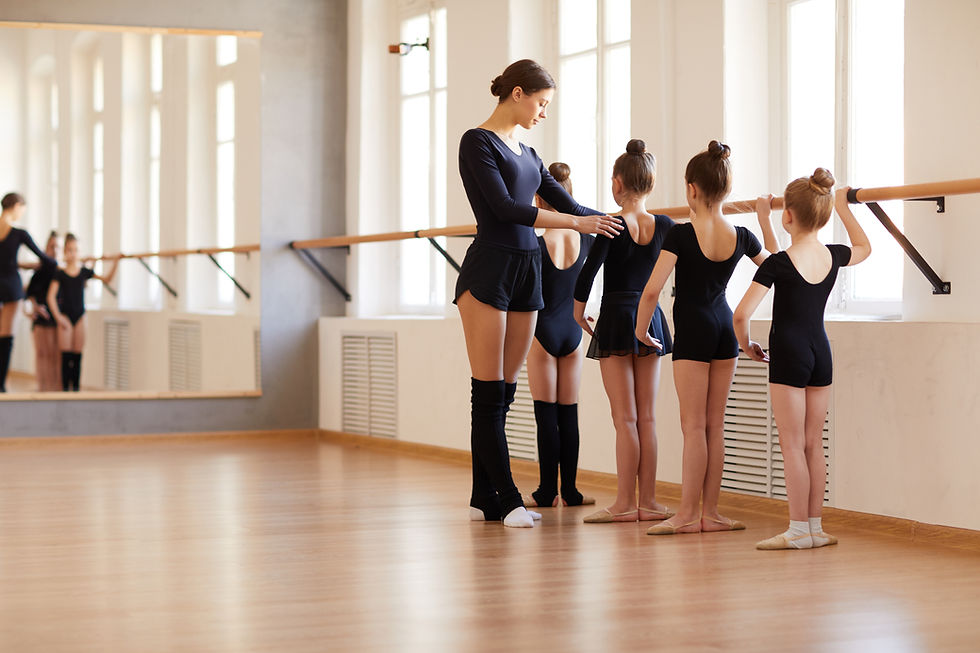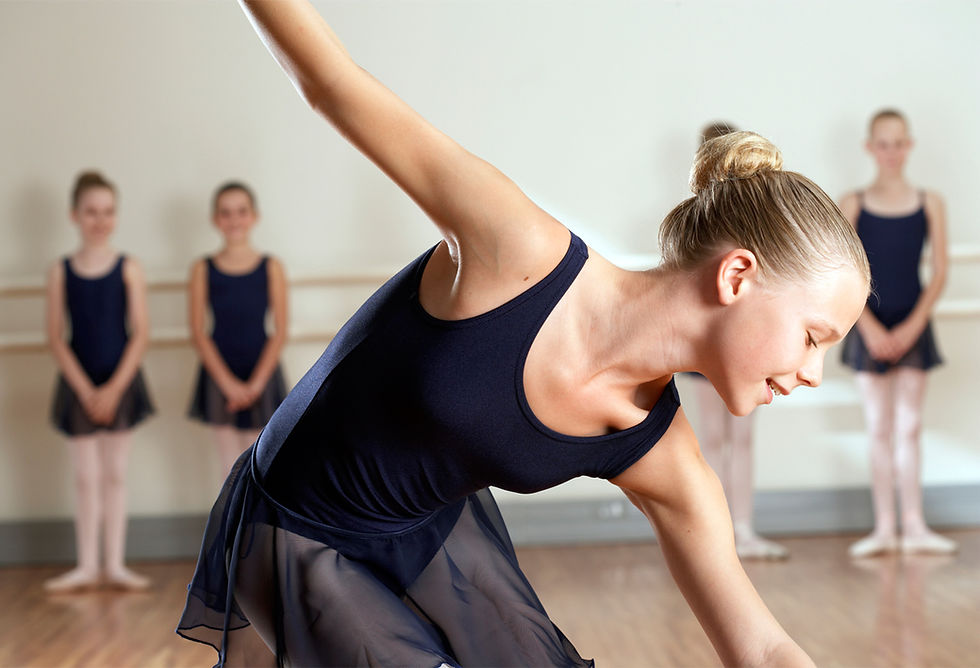How to improve your turnout: everything that you need to know
- Melania

- Nov 5, 2020
- 6 min read
Updated: Jul 27, 2022
Would you like to improve your flexibility around the whole hips area? Are you looking to make progress in your overall ballet technique? If your answer is yes then here you’ll find all the steps needed in order to achieve a better turnout and everything that you need to learn in order to understand the principles behind it. The “turnout” is an essential and crucial part of the classical ballet technique and it will make not just your life easier in general but it will also considerably improve your ballet technique and make the execution of the steps easier.

What is a turnout? The turnout is an outward rotation of both legs which originates in the hip joint and then moves all the way down to the knee, ankle and foot.
The reason why “turnout” is so important in order to achieve a good technique is because it allows a greater range of motion, stability and strength. It also enables the dancer to move easily from side to side, to do high développé by elegantly lifting your leg to the front, side or back. That would not be possible if it wasn’t for the 6 deep lateral rotators which are the most vital muscles to accomplish a good turnout. So let’s discover these muscles first before moving on to the steps:
Piriformis
Gemellus inferior
Obturator Internus
Quadratus femoris
Gemellus superior
Obturator externus

Only a few gifted dancers are lucky enough to have a full 180 degree turnout which is considered the perfect turnout but even if you don't have that you can still perform well and there are many ways that can be improved. Ideally you would start at a young age to work on your external rotation as the bones are still growing but if you start as a teenager or as an adult then you just need to work harder in order to make progress.
To have a deeper understanding of how to gain flexibility in general please check out the post "Easy life: how to increase your range of flexibility" and if you are over 50 you can read "How to regain flexibility after 50: simple amazing habits".

In order to progress and avoid injuries it is crucial that you don't force your turnout. Many dancers, as they don't have natural hip flexibility, tend to force their feet to rotate outwards by using the floor. This is not only considered as cheating but also it can seriously injure your knee, ankles and some other muscle or tendon in your leg. Turnout must come from the external rotation of your hips and if you want to find out what your natural turnout is then please do the exercise down below:
Lay flat on the floor, legs up to 90 degrees, stretched and in parallel position, start to rotate the legs outward with your feet flexed until you reach the maximum outward rotation. This would be your natural turnout position as in this exercise you will not be able to use the floor to turnout your feet and you will really be able to test your hips flexibility.
If you interested also check out the post "Change your life: how to improve your posture"
This exercise is also great to increase your hip flexibility and your external rotation if you repeat it 15 to 30 times a day depending on your age and your level. I would never suggest doing the frog and the butterfly stretch position to determine your turnout as some dancers are completely flat in this stretch and they still don't have a good turnout position.

It is important that you strengthen and stretch all the muscles which are involved in the hip rotation and that would also include the internal rotation too. Please find below some of the main exercises which are designed to make your muscles stronger and more supple.
Stretching exercises:
External rotator stretch: Stand facing the barre and place your foot on the barre with your leg in a front attitude position. Keep both legs turned out, hips are square ( if you are in front of a mirror use that to check if the hips position is correct), don't clench your buttocks but feel the stretch around the area. Make sure that before doing this stretch you are fully warmed up and that you hold the stretch for 1 minute.
Passé press: Lie on your side with your bottom arm stretched overhead and the other arm in front of you to use as a support. The bottom leg is fully stretched and the other one is left in a passé position. Both legs must be turned out and the core muscles fully engaged. You must feel the outside of your foot pressing against your bottom leg. Slowly start to engage all the muscles and the deep lateral rotators while keeping the leg in passé position outwards. Hold for a few seconds and then repeat.
Butterfly stretch: sit on the floor, bring your feet together, elongate your spine, press gently on the side of your knees until you feel a stretch (no pain) and if your flexibility allows you to, lean forward from your hips. Hold the stretch for one minute and of course always make sure that your muscles are warm before doing this exercise.
Reverse butterfly: Lay on your back, bend your knees with feet flat on the floor, move your feet out hip wide apart, allow the knees to follow inward touching each other and let the feet follow the movement until you feel a stretch in your gluteus area. Hold for about 1 minute and repeat 3 times.


Strengthening exercises:
Inner thigh press: Lie on your back, arms by your side, lift both of your legs up at 90 degree and place a ball in between your legs or a Pilates circle in between your ankles (not directly on the bone but slightly on top of it). Lower both of your legs down and engage the core muscles while exhaling. Make sure that your whole back maintains contact with the floor throughout the exercise. Start to squeeze the ball or the Pilates circle by using your inner thigh muscles and once you reach your maximum squeeze point hold the position for a few seconds. Go back to the starting position and repeat 3 times.
Kneeling attitude lift: kneel down on your right knee in front of the barre or a chair to use as a support. Your left leg is in a side attitude position rotating out deep in the inside of your hip socket. Begin to lift your leg slowly towards your shoulder until you feel your iliopsoas muscle engaged and working. Hold the position for a few seconds and then lower your leg down again until the tip of your foot touches the floor. Repeat 3 times on each leg.

As we already had a look, in the previous section, to the flexibility and strength needed to achieve a good turnout let's discover the main steps to follow in order to ensure that you are using your turnout correctly:
Ensure to turn out your whole leg rather than just for example your foot. The turnout needs to start from your hips moving down to your knees, ankles and heel (foot).
You must never rotate from your feet using the floor as that not only causes the big toe to roll over but also puts the knee under continuous strain and can eventually cause injury.
The knees and thighs are externally rotated as far as you can to ensure that the feet turnout too.
Don't tuck your pelvis under with the intention to gain more turnout as that will only lead to injury and bad posture.
Engage all your leg muscles including your core.
Check out also the post "Amazing ways to how to improve your balance and stability"
Lastly don't ever get discouraged, keep smiling and enjoy dancing and be very patient because no good things can come into your life unless you have perseverance and consistency. Never give up!
You might be interested in reading about ¨14 Secrets on how to become successful¨
If you need to ask any questions or have any ideas for any future posts please feel free to contact me or leave a comment down below! Also don't forget to subscribe if you don't want to miss any posts to come and have free access to premium content!
Follow me on Pinterest and have free access to lots of exciting Pins like the ones below!












